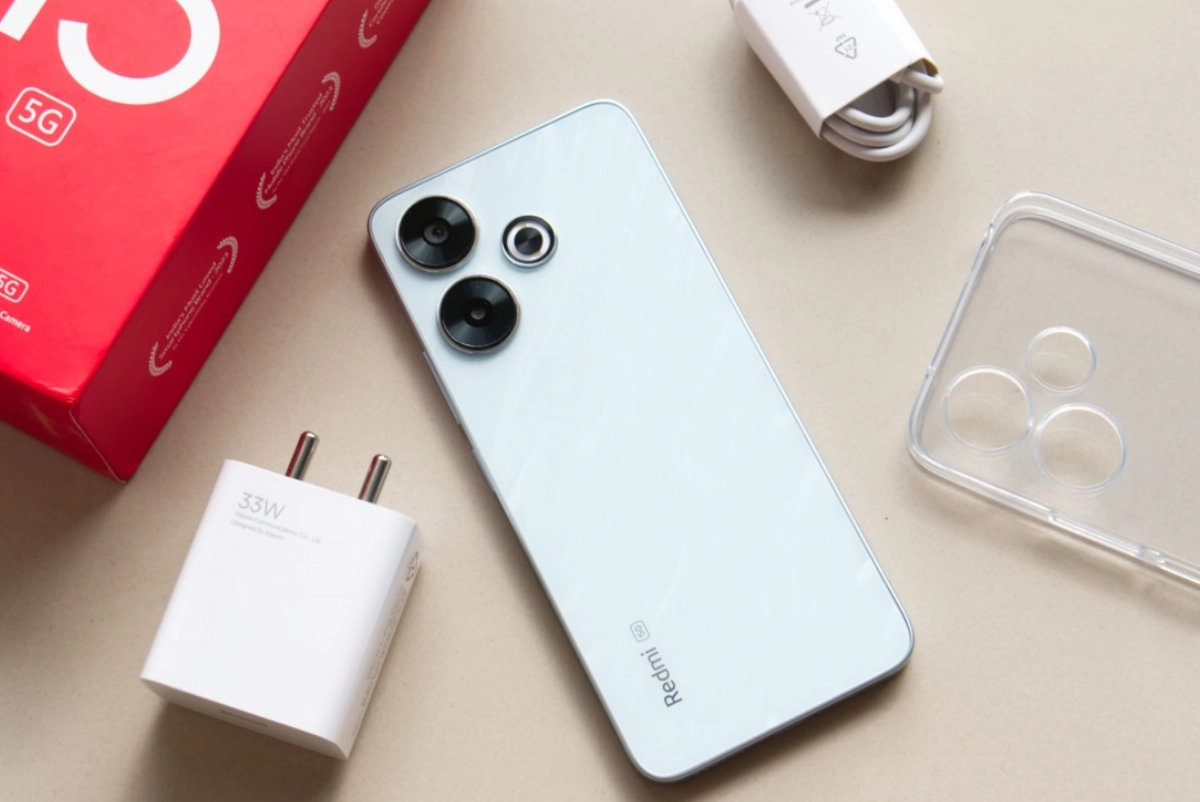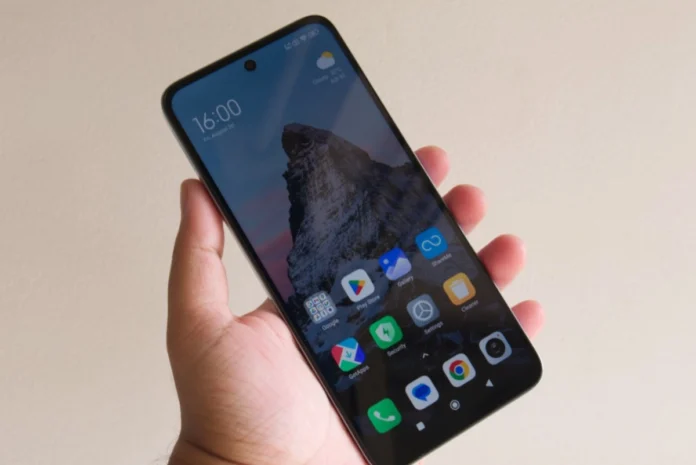Overview:
One of the Redmi 13 models that we have already examined in-depth is the Redmi 13 5G. Although the 5G is the only difference in the name, you probably won’t give it much thought. However, the term conceals several significant distinctions.

First off, the Redmi 13 5G sports the same basic display as the Redmi 13, but it refreshes at a much more pleasant 120Hz as opposed to 90Hz. Faster UFS 2.2 storage as opposed to eMMC 5.1 storage is another feature of the 5G variant.
Read more:Xiaomi 15 Pro: Unveiled Design,
The Qualcomm Snapdragon 4 Gen 2 chipset, which powers the 5G device instead of the MediaTek Helio G91 found in the non-5G model, is by far the largest difference. It will be interesting to examine the Qualcomm chip’s performance in comparison to the G91 in the performance area, as it is practically on an other level.
The two phones are the same other than that. This simplifies the situation significantly because the performance difference is what we are mostly interested in examining. Okay, then, let’s get started.
A quick look at the Xiaomi Redmi 13 5G specs:
- Body: 168.6×76.3×8.3mm, 205g; Glass front (Gorilla Glass 3), glass back; IP53, dust and splash resistant.
- Display: 6.79″ IPS LCD, 120Hz, 550 nits (HBM), 1080x2460px resolution, 20.5:9 aspect ratio, 396ppi.
- Chipset: Qualcomm SM4450 Snapdragon 4 Gen 2 AE (4 nm): Octa-core (2×2.3 GHz Cortex-A78 & 6×2.0 GHz Cortex-A55); Adreno 613.
- Memory: 128GB 6GB RAM, 128GB 8GB RAM, 256GB 8GB RAM; UFS 2.2; microSDXC (uses shared SIM slot).
- OS/Software: Android 14, HyperOS, up to 2 major Android upgrades.
- Rear camera: Wide (main): 108 MP, f/1.8, 0.64µm, PDAF; Macro: 2 MP.
- Front camera: 13 MP, f/2.5, (wide).
- Video capture: Rear camera: 1080p@30fps; Front camera: 1080p@30fps.
- Battery: 5030mAh; 33W wired, 50% in 30 min (advertised).
- Connectivity: 5G; Hybrid Dual SIM; Wi-Fi 5; BT 5.0; NFC; FM radio; Infrared port; 3.5mm jack.
- Misc: Fingerprint reader (side-mounted); Virtual proximity sensing.
Opening:
Similar packaging is used on the Redmi 13 and Redmi 13 5G. The charger that arrived with our Indian review sample was the sole deviation from the norm for Xiaomi devices in that country.

Specifically, the charger is a 33W device, the same charging capacity as the non-5G model supports. This indicates that, in theory, the charging speeds of the two models should be the same; nevertheless, we shall confirm this later.
Read more: Review of the Xiaomi 14 Civi
There is also a clear, soft silicone case included in the packing. The power button is slightly too deeply recessed in the case, making it a little challenging to install and remove. However, for a free case, it’s decent quality, providing it doesn’t yellow with age.
Create:
The Redmi 13 5G shares the same design as the non-5G model. The non-5G model has one extra color, Sandy Gold, that the 5G model does not; that is the only slight distinction, if you can call it that.
Our Indian review unit came in the Hawaiian Blue color, which is the only one in the range to feature a visual texture to the back that resembles the pattern of wet sand on the beach glistening in the sun. The pattern is etched underneath the glass back so you can only see it but not feel it. In comparison, all the other colors have a plain texture to them.
Despite the frame being plastic, the Redmi 13 5G feels reasonably premium in hand, partly due to the use of glass on the front and back. Xiaomi claims it uses Gorilla Glass 3 on the front while specifying only Gorilla Glass for the non-5G model, although we think they are likely the same. The back glass remains unspecified on both.
The IP53 dust and water resistance grade is also shared by both. Although the gadget should be shielded from dust and splashes by this, you should still keep it out of deeper water.
Present:
With a resolution of 2460×1080, the 6.79-inch IPS LCD on the Redmi 13 5G appears to be identical to that of the non-5G model. The non-5G model was only able to achieve a refresh rate of 90Hz, whereas the 5G variant is able to achieve 120Hz.
This doesn’t actually affect the display’s image quality in any way other than smoothness. With respectable viewing angles, contrast, and generally realistic colors, this panel is still of acceptable quality.
Still, the weak brightness levels on this display continue to be the primary problem. Xiaomi states that its normal brightness is 450 nits, while its max brightness is 550 nits.
In actuality, the display wipes cleanly outside. Using the camera proved difficult since, in many cases, we were unable to see what we were trying to photograph, particularly when the phone was held at an angle where reflections easily outweighed the brightness of the display.
Overall, the display is good for a phone in this price range but lacks adequate brightness for outdoor use.
Charge rate:
The battery and charging capabilities of the Redmi 13 5G are identical to those of the non-5G model. A 5030mAh battery with a stated 33W charging capacity is featured in both devices. Unlike our non-5G model, the Redmi 13 5G did arrive with a 33W charger in the box.
Xiaomi claims the phone is capable of charging up to 50% in just under 30 minutes. In our testing, this is exactly what we observed, where the phone hit 53% charge at the 30-minute mark.

